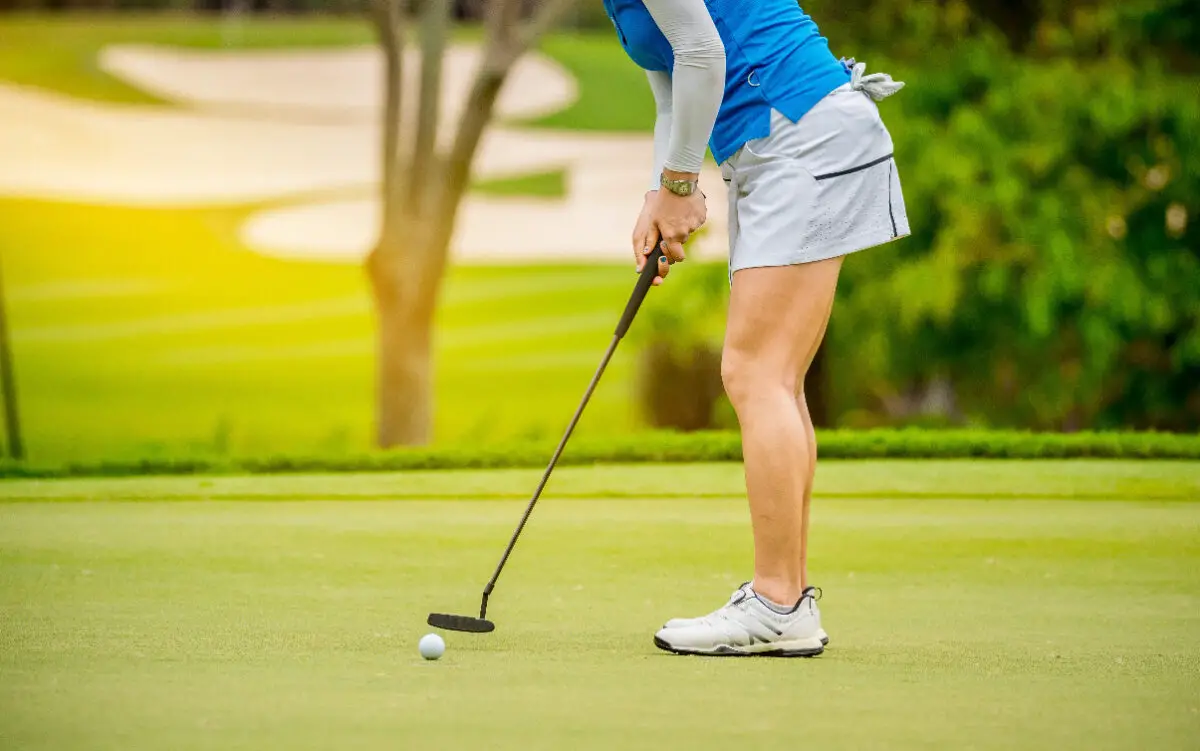Does Using a Sharpie Pen on Golf Balls Affect Performance?
It’s common practice for golfers to use a Sharpie or permanent marker to put identification markings or logos on their golf balls.
This allows telling your shots apart when playing in a group. But a question arises – can the ink from a Sharpie alter the ball’s flight or rolling characteristics?
In this article, we’ll examine whether Sharpie ink technically interferes with golf ball aerodynamics or performance.
We’ll investigate player perceptions versus concrete testing. Finally, we’ll offer tips on safely using Sharpies without concern over negative effects on your balls.

Common Uses of Sharpies on Golf Balls
There are a few typical ways recreational and competitive golfers utilize Sharpies on their balls:
- Putting initials/logos to identify their shots from playing partners.
- Marking lines or logos to aid in lining up putts.
- Filling in the side stamp number with a Sharpie ink to alter the visual perception.
- Tracing the manufacturer name or logo to embolden it and improve visibility.
- Adding creative artistic designs, stripes, and colors for personal expression.
While some sanctioned tournaments limit allowable markings, typical amateur play permits liberal Sharpie use.
Key Areas of Potential Concern
When players mark up their balls with Sharpie ink pens, concerns around negative effects arise in two key areas:
Aerodynamics – Will ink disrupt airflow and create uneven lift or drag leading to an altered trajectory?
Rolling True – Can excessive ink weigh down one side of the ball and influence putts to break unnaturally?
Among recreational players, these worries over the ball acting differently prompt debates over Sharpie’s impact. But what does real testing actually reveal?
Scientific Studies on Sharpie Effects
A handful of independent studies have aimed to determine if Sharpie ink measurably affects golf ball performance and flight:
- R&A study – Found no significant shot alteration from Sharpie ink on multiple ball models.
- Golf Laboratories test – Balls with 50% coverage flew identical to unmarked balls within test limits.
- Golfweek test – Balls fully covered in Sharpie ink showed no adverse effects in robot and player testing.
- Sports Science Lab – Saw no appreciable performance change across aerodynamics, carry, roll, or putted break.
Unfortunately, none of these studies have been published in formal technical journals to allow further validation. But initial findings imply Sharpies introduce no significant effects.

Anecdotal On-Course Player Perspectives
Beyond robot and indoor testing, what do everyday golfers notice regarding Sharpie use on balls during actual rounds?
- Many golfers remain convinced the ink alters aerodynamics and putted rolls even when shown contrary data.
- Players perceive discoloration as influencing visually perceived breaks on putts.
- Differences are more illusion and confirmation bias rather than quantifiably real.
- At most, very minor effects are detected only by elite players under intense competitive pressure.
Without rigorous controlled testing, anecdotal opinions fail to prove Sharpie use markedly alters performance.
Negligible Weight and Surface Changes
Objectively, a few facts support the conclusion of no meaningful impact from using Sharpies on golf balls:
- Even with significant coverage, ink application adds barely measurable weight.
- The ink bonds with outer materials and does not meaningfully change surface smoothness.
- Tiny gravitational differences get dwarfed by inherent ball inconsistencies.
- Aerodynamic dimple alterations are infinitesimal compared to design performance factors.
- Dimple asymmetry from manufacturer mold variance outweighs ink effects.
The evidence supports that a reasonable amount of Sharpie ink creates merely superficial changes with no notable gameplay ramifications.
Tips for Safely Using Sharpies on Golf Balls
Though Sharpie use seems to avoid technical performance effects, following these tips ensures avoiding any concerns:
- Apply ink smoothly in thin coats, avoiding pooling in dimples.
- Keep overall ink coverage reasonable – avoid exceeding 20% of the surface.
- Spread weight evenly by balancing ink on both sides.
- Omit ink from the equator line which contacts the clubface.
- Clean ink-stained grooves on wedges to prevent transfer.
- Allow a few minutes for the ink to fully cure before play.
With smart Sharpie use focused only on identification, you can avoid even minimal potential issues during play.
The Verdict on Sharpies and Golf Balls
In conclusion, no compelling quantitative evidence validates the common suspicion of Sharpie pens altering golf ball performance and flight characteristics.
Within reasonable usage parameters, the variable manufacturing tolerances far outweigh any introduced effects.
While golfers may insist on perceiving alteration from cosmetic markings, true ball flight depends on physics and aerodynamics overwhelmed by ink’s superficial changes.
So utilizing Sharpies purely for personal identification and orientation causes no harm.
Focus instead on your fundamentals, equipment routine, and course management. With an open mind to science over illusion, your Sharpie-marked golf balls will fly true shot after shot.
